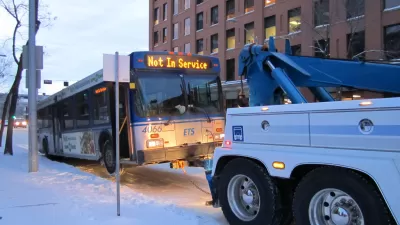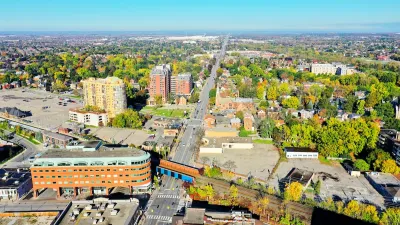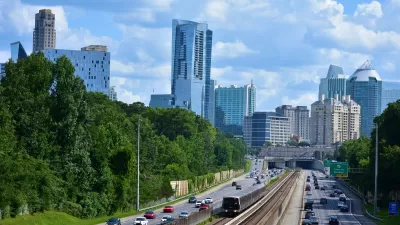Transit authorities often push cuts on the people most dependent on public transit, sometimes called "captive riders." Instead, they focus resources on luring tourists and "choice riders" out of their cars. An article by Samantha Winslow explains.

On one side of town, tourists and young professionals head downtown on light rail: clean, air-conditioned, fast. If there’s a problem with service, the city diverts buses to help.
On the other side of town, workers wait at bus stops. The buses that carry them to work come less and less frequently, thanks to service cuts. Drivers struggle to get through their routes in less time.
Both scenarios are part of a promising trend: transit ridership is at its highest since 1956, with 10.7 million trips in 2013, according to the American Public Transportation Association.
This is despite widespread cuts to bus and rail service—and rising fares. The 2008 economic crisis started the pinch, but federal and local officials have continued to squeeze.
In Pittsburgh, for example, bus riders are still feeling the cuts begun during the crisis, while the city’s seen a boost in light rail, which caters to tourists and people with cars.
In 2011 the transit authority cut its budget by 15 percent, eliminating 29 bus routes. It laid off 180 workers and reduced hours for more. The cuts continued the following year, and the region lost tens of thousands of bus riders. Some switched to cars, if they had one, or carpooling. Others walk now.
“We have whole segments of our community that don’t have any transit at all,” driver Mike Harms said. In neighborhoods where service was slashed, “people have to walk a mile to a bus stop.”
FULL STORY: Transit Irony: The More You Rely on It, the More They Cut

Alabama: Trump Terminates Settlements for Black Communities Harmed By Raw Sewage
Trump deemed the landmark civil rights agreement “illegal DEI and environmental justice policy.”

Planetizen Federal Action Tracker
A weekly monitor of how Trump’s orders and actions are impacting planners and planning in America.

Trump Administration Could Effectively End Housing Voucher Program
Federal officials are eyeing major cuts to the Section 8 program that helps millions of low-income households pay rent.

USDOT Threatens to Pull New York Highway Funding
The Trump administration wants the state to kill New York City’s congestion pricing program despite its demonstrated success.

LA’s Tree Emergency Goes Beyond Vandalism
After a vandal destroyed dozens of downtown LA trees, Mayor Karen Bass vowed to replace them. Days later, she slashed the city’s tree budget.

Sacramento Leads Nation With Bus-Mounted Bike Lane Enforcement Cameras
The city is the first to use its bus-mounted traffic enforcement system to cite drivers who park or drive in bike lanes.
Urban Design for Planners 1: Software Tools
This six-course series explores essential urban design concepts using open source software and equips planners with the tools they need to participate fully in the urban design process.
Planning for Universal Design
Learn the tools for implementing Universal Design in planning regulations.
Ada County Highway District
Clanton & Associates, Inc.
Jessamine County Fiscal Court
Institute for Housing and Urban Development Studies (IHS)
City of Grandview
Harvard GSD Executive Education
Toledo-Lucas County Plan Commissions
Salt Lake City
NYU Wagner Graduate School of Public Service





























